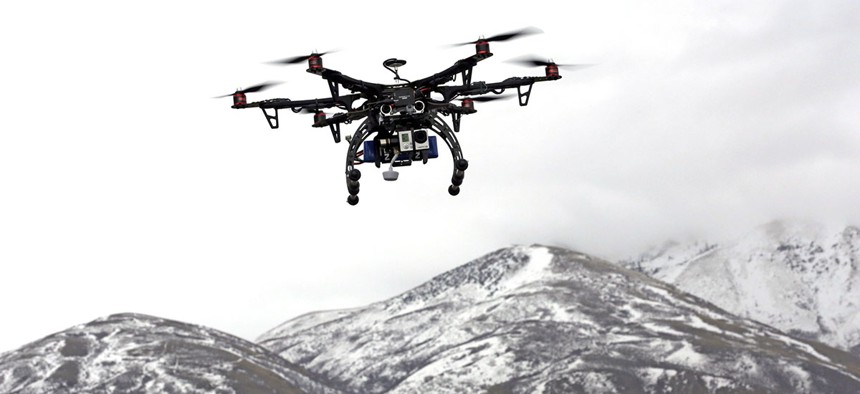Interior Department Sees ‘Limitless Possibilities’ for Drones

Rick Bowmer/AP
The department aims to be the civilian leader in unmanned systems, flying nearly 5,000 missions last year alone.
The government is fighting wildfires and managing natural resources faster than ever before and at a fraction of the cost—and it has drones to thank.
The Interior Department relied on drones to fly nearly 5,000 missions last year in the agency’s efforts to track wildlife, inspect infrastructure and survey federal lands, according to a report. The agency dedicated more than 700 flights to supporting responders to wildfires in Northern California and across the country.
The agency began experimenting with drones in 2010 and has since grown its fleet to include 312 unmanned aircraft and more 200 certified pilots. Unmanned aircraft provide a cheaper, more efficient way to relay information from the air to the ground, and the department’s usage of the new tech spiked 82 percent between 2016 and 2017.
“Interior has worked hard to build a UAS program that is a leader in non-Department of Defense applications,” said Harry Humbert, the agency’s deputy assistant secretary for public safety, resource protection and emergency services, in a statement. “This technology opens limitless possibilities for resource managers.”
Fitted with video cameras, infrared heat sensors and other surveillance equipment, drones can complete missions in one-seventh of the time and at one-tenth of the cost of traditional manned aircraft, said Jeff Rupert, the acting director of Interior’s office of wildlife and fire. “Adding drone support to fire suppression efforts could dramatically reduce the size and cost of wildfires, potentially saving millions of dollars and hundreds of thousands of acres.”
Drones proved particularly crucial in Interior’s efforts to curb the devastating fires along the Pacific Coast. More than 98 percent of flights in the Northern California region and 42 percent of flights in the Northwest were directed at fighting wildfires, the report said.
The agency will soon start testing new drones to assist in fire suppression and fuel management, which will prove particularly useful in smoky conditions where traditional aircraft can’t fly, the agency said. Officials expect to grow the department’s drone fleet to include roughly 800 aircraft by fiscal 2020, according to Interior’s 2015 UAS integration strategy.






